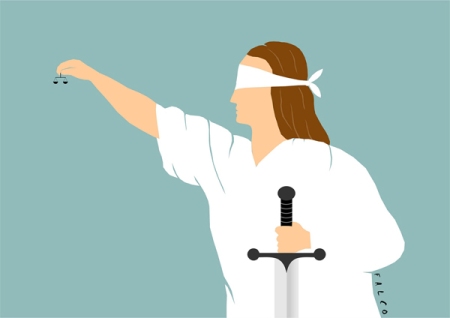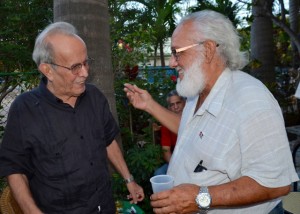
The Militant
Vol. 80/No. 6 February 15, 2016
(feature article)
‘In Cuba, a prisoner is another human being’
Cuban Five: It’s different in US prisons, where the system
is organized to dehumanize you
“It’s the Poor Who Face the Savagery of the US
‘Justice’ System”: The Cuban Five Talk About
Their Lives Within the US Working Class
http://www.pathfinderpress.com/It-is-the-poor-who-face-the-savagery-of-the-US-justice-system, is a new book from Pathfinder. It
centers on a 2015 interview by Mary-Alice Waters and Róger
Calero with the Cuban Five in Havana. Each was incarcerated in
the U.S. from 14 to 16 years after the FBI framed them up for
activity in defense of the Cuban Revolution. The excerpt below
follows a discussion on how the capitalist rulers foster the
prevalence of drugs and gangs in U.S. prisons. Copyright ©
2016 by Pathfinder Press. Reprinted by permission.
MARY-ALICE WATERS: We’ve had some experiences here in Cuba
that are the opposite of what you’ve been describing. We
have a friend in Matanzas, for example, a university professor
who also gives classes in prison and takes pride in it. She told
us about using some books Pathfinder has published in her classes
and the interest they generate. We’ve read about Silvio
Rodríguez and other musicians giving concerts inside the
prisons. …
We know things in Cuba are far from perfect. But social relations
— the way people relate to each other — are the
opposite of what you experienced in the US. And that’s
true in the prison system too. In Cuba the revolution carried out
by the workers and farmers eliminated the economic and social
system built on class exploitation, on retribution and
punishment, social isolation, punitive deprivation of medical
care, denial of culture and education. That’s why the US
government is so determined to punish the Cuban people and
destroy your example.
GERARDO HERNÁNDEZ: We were with many Cuban prisoners in the
United States who had been inmates in Cuba as well. …
They’d often say, “Yes, material conditions in
prison” — especially in the newer ones —
“are a lot better than where I was in Cuba.”
Obviously you can’t compare living conditions in the
richest country in the world with the economic resources in Cuba.
But most of them recognized that prison personnel here in Cuba
make a real effort to rehabilitate inmates, to help them. In the
United States, a prison counselor is someone who puts in his
hours at work and does his best not to ever have to see you.
…
The human part is essential. I often give the example of a young
neighbor of mine. When he was in high school, he was involved in
something that rarely happens in Cuba — what’s
known in the US as “bullying.” He was studying in
the countryside on a scholarship program and he was being
pestered and harassed. One day he took a knife, scuffled with the
other boy, and stabbed him in the wrong place, killing him.
That boy was sentenced to seven years. During that time he
completed high school and went on to university. … He took
classes all day, and the bus brought him back to prison. …
I recently had a conversation with a very prestigious young
artist here in Cuba, Mabel Poblet. She showed me some samples of
her work. One stood out to me — an installation with
hundreds of red plastic flowers. “Look at these
flowers,” she said. “They were made by a woman who
is a prisoner in Holguín.”
“We visited the women’s prison there and met an
inmate, Betsy Torres, who was making flowers,” Mabel said.
“I had in mind doing an installation using flowers, so I
asked her to make some for me — the ones you see here.
After she was let out for good behavior, I invited her to the
opening of my exhibition.”
This type of exchange is the opposite of the dehumanization that
takes place in the US prison system. …
FERNANDO GONZÁLEZ: Look at what the Bureau of Prisons calls
its Program Statement. It says the Bureau of Prisons encourages
social contact with the outside. But in practice it’s the
opposite. They put up obstacles to everything, including visits.
It’s not enough that the prisoner is 1,500 miles or more
from his family. It’s not enough that many families
can’t afford a plane ticket and a weekend in a motel to
come see you. On top of all that, the searches and other
alienating procedures family members and friends have to go
through to get into the prison, not to mention the tense,
uncomfortable layout of the visiting room. …
GERARDO HERNÁNDEZ: “The most important difference,
what I miss most,” some Cuban inmates in the US would tell
us, “is that in Cuba I had the right to conjugal visits,
or to get a pass to see my family.” But not in the United
States.
In federal prisons and in all but four of the fifty states,
something so elementary as conjugal visits are not permitted. If
they were, it would greatly reduce tensions. It would humanize
people. It would be an incentive for good behavior. …
RAMÓN LABAÑINO: They don’t care whether
there’s money in the budget for another handball court.
That’s a big issue I had, since — in addition to
reading, studying, and playing chess — sports was one of
the ways I handled all those years in prison. I exercised, lifted
weights, and played lots of handball. But prison officials
didn’t want to paint the floor of the handball court with
the kind of rubber compound that makes it easier on your knees.
That’s how I injured my knee, in fact. But medical care in
prison in the US is terrible; they don’t want to spend
money on that either. I went to the doctor and he told me,
“Take two aspirin. Put ice on it, keep your feet up, and
tomorrow you’ll be better.” They only really take
care of you when you’re on the verge of dying. …
There’s money in the budget to buy better food for the
cafeteria too, but it’s never fully used. I know. I worked
in the cafeteria several times.
Actually, I didn’t like working in the cafeteria, because
a lot of people take those jobs in order to steal food. But we
don’t steal. It’s not our philosophy, not the
social values we learned in Cuba. With what I ate I had enough.
Frankly, I’m no good at stealing.
Here in Cuba it’s different. Our officers may not have
resources, but they are trained to really help you. I’d
venture to say that ethic goes far beyond the framework of the
prison system to the broader society here.
In Cuba a prisoner is another human being. He’s someone
who made a mistake and is in prison for that reason. It’s
not like the US, where the prison population is the enemy
— just as uniformed officers there see the people as the
enemy. Why? Because on some level they understand there could be
a social revolution in the United States some day. And their job
is to contain that revolution, in order to protect the social
layer that’s in power.
That’s pretty elementary. You don’t even need
Marxism-Leninism to see that. But if you don’t understand
this, you’ll never see why things happen the way they do
in the United States. Why the police act the way they did in
Ferguson, Missouri, last year. Why there’s no solution
within that system. …
FERNANDO GONZÁLEZ: In Miami we saw women who were pregnant
when they were arrested. When the time came to give birth, they
were taken to the hospital …
RAMÓN LABAÑINO: …in chains.
FERNANDO GONZÁLEZ: Yes, in chains. They gave birth in the
hospital, and two days later they were brought back to their
cells without their baby.
Recently I visited a women’s prison here in Cuba. …
In the United States, you know from miles away you’re near
a prison. You see the walls, fences, razor wire, towers, lights,
surveillance vehicles. But in Guantánamo, as we got closer, I
asked, “Where’s the prison?” There was a
wall you could easily jump over. Even as fat as I am, I could
have jumped over it!
Inside, some rooms are like small apartments. If a woman is
pregnant — or becomes pregnant, because they have conjugal
visits — she can stay in one of those rooms until the baby
is a year old. It’s a small room with a kitchen, where she
can cook. The prison provides food for the baby and other
necessities. There’s also a sewing shop.







